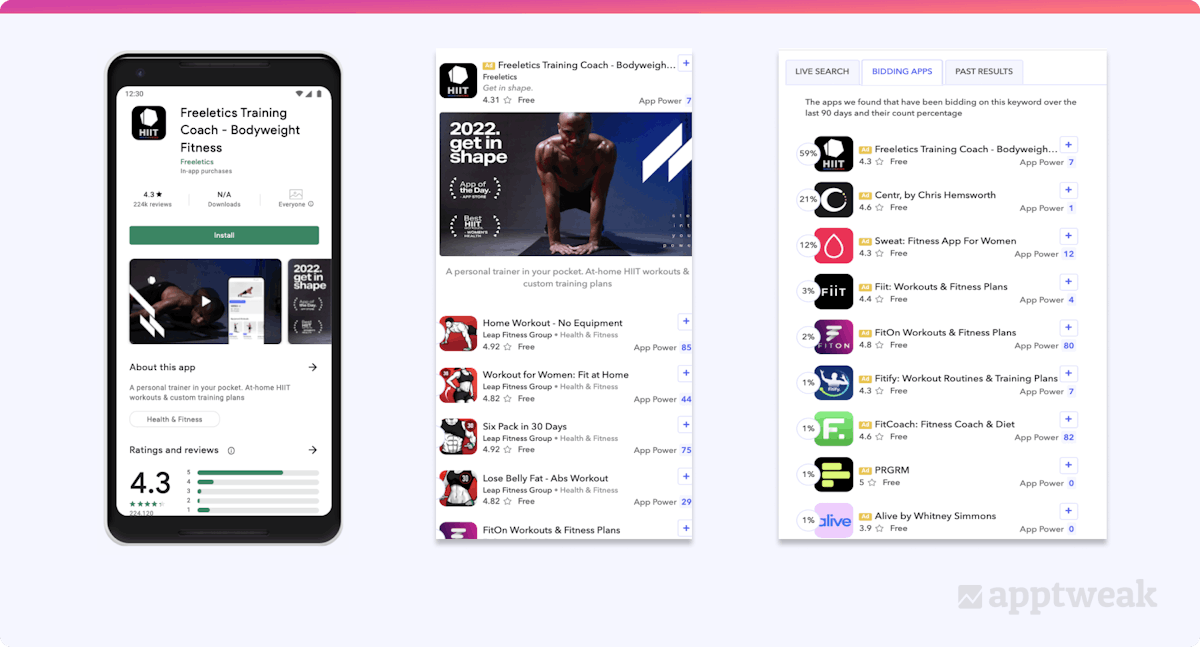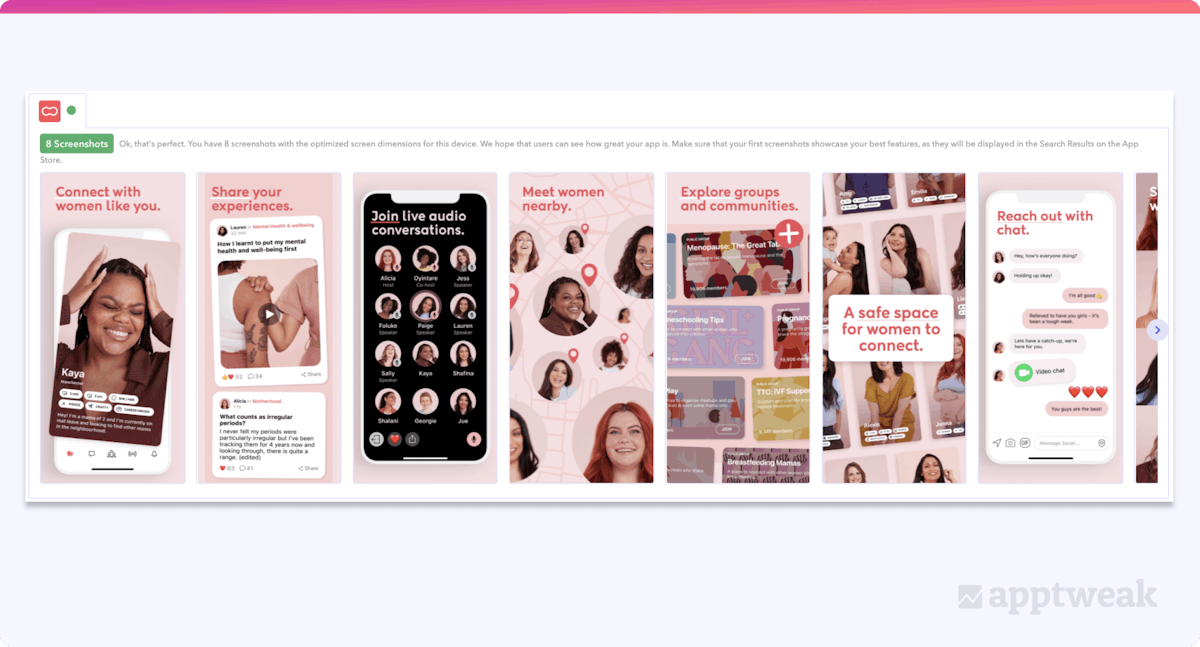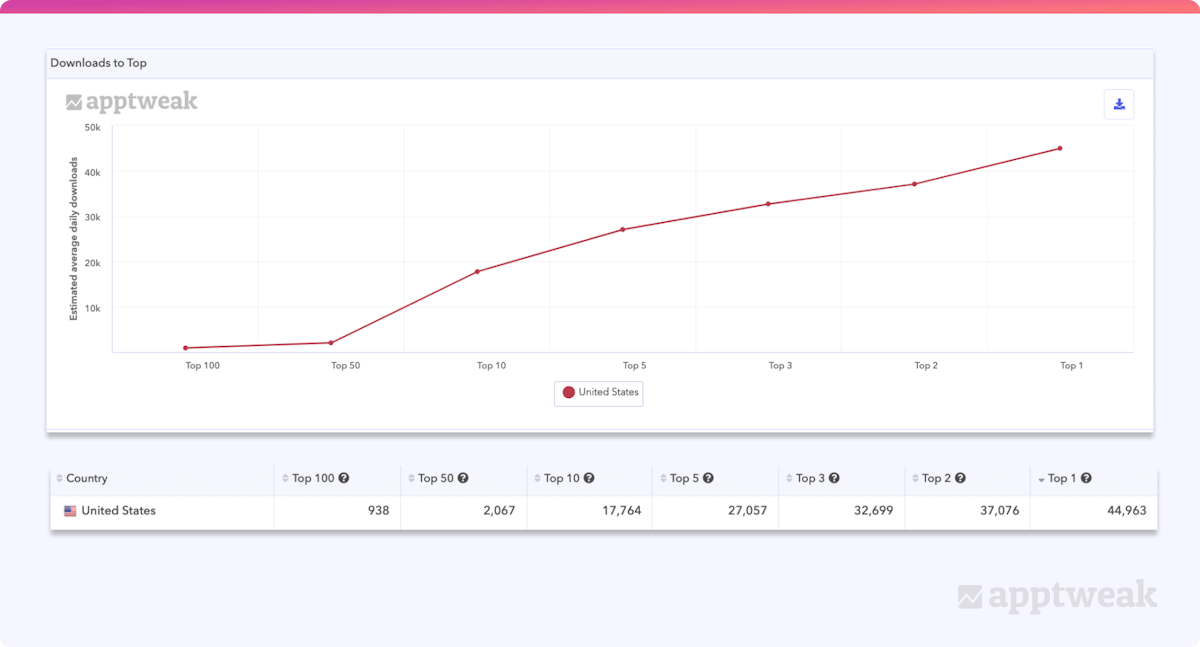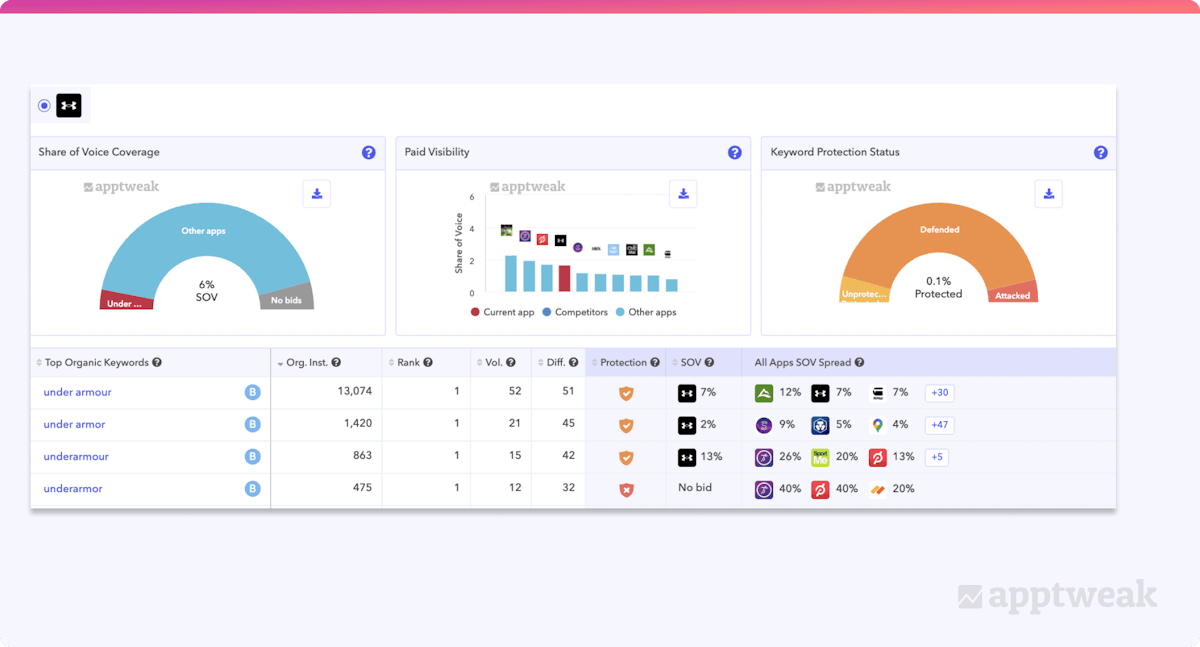
The Biggest Mistake UA Managers Make (Overlooking ASO)
It’s common practice to divide App Store Optimization (ASO) and user acquisition (UA) into two distinct categories with independent strategies and budgets. As a result of this, many UA teams receive large budgets for paid ads, but have a very difficult time convincing managers to invest in ASO. After all, why should you spend time and money on something that should be easy and organic? This separation, however, represents a missed opportunity. Read this blog to learn why overlooking ASO is one of the biggest mistakes a UA manager can make!
How paid UA & ASO fuel app growth & retention?
There is a close relationship between paid UA and ASO, as both areas prioritize the same goal: to drive more conversions of quality users while lowering the overall cost per install (CPI). This is why leveraging both fields to your advantage is key to effectively market (and ultimately grow) your app.
Understanding how to drive more organic traffic is a common challenge that mobile marketers face when trying to grow their apps. Given that organic installs are accompanied by lower acquisition costs and often higher retention rates, focusing on organic user acquisition is key for any company looking to grow and establish itself on the app stores.
Paid acquisition is key to driving awareness among new customers or announcing new features, but virality is driven by organic user acquisition. There is a close relationship between UA and ASO; oftentimes, paid UA will lead to even more organic installs. This complementary relationship is why it’s important to keep your app store listing optimized, so as to best capture any new leads your ads bring.
So why do ASO and UA work best together and how can app teams leverage them most effectively? Let’s break this down into parts:
1. Impact of ASO on app growth
ASO is the process of improving an app’s visibility in the app stores with the primary goal of increasing app downloads and your app’s conversion rate (turning app impressions into downloads). According to Apple, up to 65% of all app downloads come from users who search for a specific keyword on the App Store, so if you aren’t investing time in ASO, you’re missing out on the largest discovery channel available within the store.
Your app store listing is critical because every user who comes through the store to download your app will eventually land on your app page. It doesn’t matter if they are coming from organic searches, Search Ads, social media ads, display ads, or referrals; the last thing a user will see before downloading your app is your app page. That said, a thoughtfully optimized app page is key to increasing your conversion rates and lowering your CPIs for app advertising campaigns.
Learn why ASO is essential to your app’s growth with our beginner’s guide to App Store Optimization
2. Impact of user acquisition on app growth
Paid user acquisition (UA) is the practice of paying to advertise an app or game with the goal of driving traffic to an app store page and generating new installs. Installs that come from UA channels are referred to as “paid installs,” versus the “organic installs” that come from users who download your app following searches on the app stores.
With an ever-increasing number of apps on the app stores, you need to put work in to stand out. If your app is not showing up in search results organically, the best choice you have is to send paid traffic to your app to get the ball rolling. Once you have achieved that increase in traffic and paid installs, you should also see an increase in organic visits. From that increase in organic visits, you may see a lift in organic installs, as a result of the heightened visibility in general.
 Apple Search Ad by Fetch Rewards, appearing after a search for the keyword “Nike.”
Apple Search Ad by Fetch Rewards, appearing after a search for the keyword “Nike.”
UA is highly targeted; ads are curated for specific audiences and aim to deliver the messaging that is most likely to convert. Beyond conversion numbers, the motivation behind having highly targeted ads is to keep ROI as low as possible. From a marketer’s perspective, having visibility into who you target with your ad listing, the number of impressions you receive, your ad conversion rate, and the return on your investment is very desirable.
Unfortunately, with iOS changes enforced in 2021, third-party user data is no longer available without gaining explicit permission from users. Due to these changes, many types of UA campaigns have had to adjust.
A strong strategy to help lift your app’s brand recognition and influence a positive effect on your branded search is to run ads on multiple platforms. Exposing users to your brand name and app benefits outside of the store gets them ready to click that download button. This is because those users will already recognize your app as part of a verified brand and likely have a good idea of what it can offer them, once they arrive on your app page.
One caveat to consider is that branded search ads that lead users to the app store increase the likelihood of that user typing in your brand name directly into the app search bar. When they search for your brand directly, the app stores will attribute that visit or install to “branded search” (organic), even if the user conducting that search was at the end of a paid UA campaign and had seen your ads across other platforms for several days. Due to this, it is not always easy to tell where your visits, installs, and results may be coming from, so explicitly distinguishing between the value of paid UA and ASO is less comprehensive than accepting their complementary relationship.
Learn more about how to leverage ASO to improve user acquisition
3. How to create synergies between ASO and UA?
Without an unlimited budget, paid UA is not sustainable alone
Despite the big impact UA campaigns can yield, it’s essential to remember that paid user acquisition is not sustainable alone. While UA campaigns may bring instant results, these paid campaigns will not continue to bring users to your app page once they’re stopped; even pausing your campaign will cause an immediate drop in your overall downloads. If you don’t have an unlimited budget for paid user acquisition, you will need a solid ASO foundation to maintain a stream of high-quality users downloading your app, even when UA dollars aren’t actively being pushed towards it.
 Google Play app install ad run by Freeletics on the keyword “workout.” Freeletics has bid on this keyword far more than its competitors over the last 90 days.
Google Play app install ad run by Freeletics on the keyword “workout.” Freeletics has bid on this keyword far more than its competitors over the last 90 days.
Develop a cohesive messaging between your ad & app page
Building a strong ASO foundation for your store product page first requires you to add and optimize the keywords in your metadata, in order to show up for users’ search queries. Second, your app product page needs to align with users’ expectations based on those keywords through relevant screenshots and scannable descriptions, so as to compel them to click “install.” This is yet another reason why a strong UA campaign first depends on a strong ASO foundation; if you spend money sending a user to your app product page and then the keywords, screenshots, reviews, and descriptions do not appear to deliver what your ad promised, you are likely to lose that install.
How to optimize your app product page on the App Store and Google Play
When crafting a cohesive story between your ads and app product page, keep the following points in mind:
- Make sure to highlight your value proposition in a creative way that stands out from your closest competitors
- Share a singular message with your audience from your ad to your product page. This is much more impactful than communicating your value proposition through a variety of messages, which may disrupt the user’s expectations once they reach the product page.
- Your UA campaign and product page should not be completely independent of each other. If you manage them separately, you run the risk of sharing inconsistent messaging to your users, and ultimately sending those users to a page that does not reflect the imagery, copy, and value propositions in your ads. As a result, your visitors are likely to drop off before conversion when their expectations are not met, which would consequently lower your app’s conversion rate. Thus, cohesion between UA and ASO is essential.
 Example of an ad that could improve its cohesion between the ad creatives and product page. Komoot is bidding on the word “cycling” and has ad-specific screenshots that relate to its cycling route and analytics benefits. But when you click on the ad, the screenshots on the product page are completely different and appear to be more targeted towards mountain trail athletes than cyclists, as the ad initially suggested.
Example of an ad that could improve its cohesion between the ad creatives and product page. Komoot is bidding on the word “cycling” and has ad-specific screenshots that relate to its cycling route and analytics benefits. But when you click on the ad, the screenshots on the product page are completely different and appear to be more targeted towards mountain trail athletes than cyclists, as the ad initially suggested.
Keep your cost per install low and return on investment high
When combining UA with ASO, your goal should be to keep the return on investment (ROI) high and the cost per install (CPI) low (while making sure you aren’t cannibalizing keywords—we’ll get to that later). When running your campaigns, if you find that your ads are receiving a high number of impressions but your app page’s conversion rate is still low, this likely signals a problem with your ASO.
Expert Tip
If you don’t have an unlimited budget for paid user acquisition, you will need a solid ASO foundation to maintain a stream of high-quality users downloading your app, even when UA dollars aren’t actively being pushed towards it.
To get the most value out of your UA campaigns, you’ll need to spend time optimizing your app page and developing your ASO strategy so that when users click on your ad, they are immediately convinced to download your app and complete the conversion process. Optimizing your screenshots and app icon is particularly important for your app page, as this will help drive more installs per impression from your UA campaigns, ultimately lowering your CPI and increasing ROI.
 Example of strong, creatively optimized screenshots for the Peanut app.
Example of strong, creatively optimized screenshots for the Peanut app.
Furthermore, custom product pages and A/B testing are both effective levers to pull when optimizing your app store listings. These techniques will help you promote the most impactful messaging possible and curate your messages to relevant custom audiences.
Learn about custom store listings and how to use them on Google Play
Remember that app growth is not linear
Something to keep in mind is that the number of installs needed to reach a specific ranking is not linear and will not be the same across all apps, games, and categories. The number of installs needed to achieve specific rankings varies depending on relative competition, category traffic, localized industry conditions, and more. Just because you spend more, doesn’t mean your app will rise in rankings and experience the same increase of installs with each increased ranking.
 For the Food and Drink category in the United States, while it may only take around 2,000 daily downloads to reach the top 50 spots, it takes more than 8.5 times as many downloads to reach the top 10 spots.
For the Food and Drink category in the United States, while it may only take around 2,000 daily downloads to reach the top 50 spots, it takes more than 8.5 times as many downloads to reach the top 10 spots.
In fact, the relationship is exponential—the higher your app ranks, the more installs it takes to climb higher up the ranks. Similar to rankings, the relationship between increased UA spend and organic installs is not linear and often becomes even more competitive when you increase your budget to a more competitive bracket against bigger players or target more competitive keywords.
User acquisition can lead to more organic app installs
UA and ASO work best when they work together. As it so happens, UA can often lead to more organic installs, because paid ads bring new attention to your app listing, which leads to more first-time installs. Then, the more installs you receive, the higher your game or app will rank in the app stores. The higher you rank in the app store, the more visibility you’ll receive in the top charts, categories, Browse tabs, and general search results. The more visibility you have, the more people will find your app organically in the store and download your app. Thus, the cycle continues. To put it simply; UA leads to an increase in discoverability and discoverability is key to good ASO.
When assessing an app’s performance and adjusting its visibility within categories and search results, the app stores do not differentiate between organic vs. paid installs, which is why spending money on paid UA will consequently lift your ASO.
Learn our 4 go-to methods to drive more organic downloads to your app
4. Watch out for keyword cannibalization
The risk of leveraging ASO and UA too closely is cannibalization, where you end up paying to market your app to a user who would have likely downloaded your app organically, without any ad at all. Cannibalization here specifically relates to UA campaigns with app store ads, such as Apple Search Ads and Google Ads (app installs).
Imagine you are running an ASA campaign that bids on a keyword your app already ranks first on organically. This may be an example of you cannibalizing a keyword, as the user will see your App Store ad directly above your app’s organic #1 listing in the search results, and may click the ad instead of the organic listing they would have chosen otherwise. As a result, you would end up wasting money on what would have been an organic download. Clearly, cannibalization is a risk for keywords your app already ranks high for organically.
Imagine now that you are running an ASA campaign that bids on your brand name; when a user searches for your app’s brand name, they are then met with an ad for your app at the top, directly followed by your organic app listing. This also risks cannibalization; in most cases, it is not worth bidding on your top brand keywords because in all likelihood, users searching for your brand name already have a high intent to find your specific app. In this scenario, you spend money on a download that was going to happen regardless. Thus, branded keywords are also at a high risk of cannibalization.
 Apps bidding on Under Armour’s keywords in Apple Search Ads.
Apps bidding on Under Armour’s keywords in Apple Search Ads.
Ultimately, cannibalization is a serious risk for both branded keywords and keywords that your app already ranks high for organically. In general, if your app ranks in the top three spots for a keyword search, you risk cannibalization by bidding on those keywords. When leveraging ASA with ASO, the ideal keywords to target are typically generic keywords and keywords your app ranks low for. Targeting lower performing keywords with a paid user acquisition campaign can be particularly impactful because such campaigns can help lift your organic performance on those keywords (and similar searches) beyond the end of the campaign.
The most effective way to reach a balance between your ASA and ASO strategy is to experiment with your Search Ads campaigns. For example, if you increase your campaign spend on the keyword “wine,” you should expect to see a positive correlation between paid and organic installs if your campaign is having a positive impact on organic installs. If you see the opposite, your paid installs should increase while your organic installs decrease in an inversely correlated relationship; this would signal keyword cannibalization. Ultimately, you’ll need to keep a close eye on both metrics and experiment on different keyword bids to lock in the right balance between your paid and organic strategy.
Discover our model to measure the cost of cannibalization in Apple Search Ads
TL;DR
UA teams should never overlook ASO in their app growth strategies for the following reasons:
- The ultimate goal of UA and ASO is to increase the visibility of your app and drive high-quality installs. ASO and UA are most powerful when leveraged collectively.
- Paid UA will generally boost your ASO by generating higher visibility and consequently more organic installs.
- When combining paid UA with ASO, your goal should be to keep the return on investment (ROI) high and the cost per install (CPI) low, whilst making sure you aren’t cannibalizing keywords.
- Paid UA can also be wasted if you haven’t first spent the time investing your app’s ASO and building the foundations for a compelling product page. Optimizing your product page and making sure you promote cohesive messaging across your ads and app page is essential.
In a marketplace as competitive and saturated as the App Store and Google Play, standing out is difficult but essential for growth. Without an unlimited budget, UA isn’t a sustainable method for app growth. Utilizing a solid ASO strategy alongside your paid campaigns helps to create a more sustainable growth pathway for your app. Ultimately, UA and ASO both play critical roles in the app conversion funnel and leveraging these strategies together is far more powerful than managing them independently.
Discover how AppTweak can help fuel your App Store Optimization strategy worldwide.


 Sukanya Sur
Sukanya Sur

 Oriane Ineza
Oriane Ineza

 Micah Motta
Micah Motta
